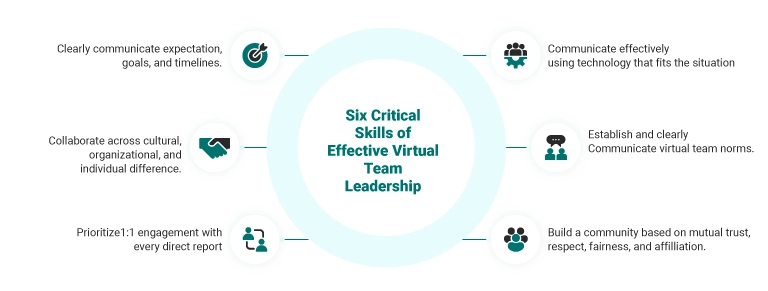The BFSI (Banking, Financial Services, and Insurance) industry has recently undergone a significant transformation, incorporating remote and hybrid work models into its operational framework. As the industry adjusts to this evolving landscape, understanding the dynamic responsibilities and challenges of leaders is crucial.
According to a study by HR.com, hybrid and remote work arrangements have emerged as the predominant forms of employment. The study revealed that 74% of participants were likely to adopt remote work strategies and 65% preferred hybrid ones. Despite 60% of respondents noting improvements in their work arrangements since 2020, only 34% reported a positive shift in their corporate culture over the same period.
So, what pivotal role must leadership undertake in guiding and supporting remote and hybrid teams? This blog will delve into the unique challenges BFSI professionals encounter while working remotely or in hybrid setups. It will also examine leaders’ strategies to manage and motivate their teams effectively.
Leadership Challenges in Managing Remote & Hybrid Teams
Virtual Paranoia
Virtual paranoia emerged during the pandemic as remote work became widespread. Previously, remote work was a choice, but the sudden shift led to a global wave of involuntary remote workers. This term describes the subtle disconnection felt by individuals constantly engaging in virtual interactions despite being exposed to many people. Many companies have transitioned to a hybrid work model, but employees still face this challenge at times.
The concept is rooted in the human need for connection in traditional office micro-interactions. Remote work lacks these subtle social cues while providing exposure to a broader network. Even introverts may experience virtual paranoia due to the structured and purposeful nature of remote interactions, leaving individuals feeling isolated despite virtual connectivity.
Generational Differences
Generationally, differences in responses to remote work have been observed. Interestingly, Millennials and Gen Z show a higher tendency toward virtual paranoia in the workplace than baby boomers. Despite their familiarity with remote work, the younger generations exhibit an increasing sense of virtual paranoia over time. The exact reasons behind this phenomenon remain unclear. Recognizing that the psychological dynamics of the team differ significantly from the traditional office environment is crucial for effective leadership in remote teams. This awareness forms the foundation for successfully managing remote teams.
Even leaders have shared concerns about managing remote teams, citing the absence of familiar office cues. This discomfort resonates among leaders eager to return to offices, potentially disregarding the productivity gains observed in remote setups.
How can leaders address the aforementioned challenges to bring about individual and organizational changes? The upcoming sections will discuss these aspects.
Six Critical Skills of Effective Virtual Team Leadership

Leaders in the BFSI industry can follow the points below in a hybrid, remote, or virtual work setting to establish effective alignment with their teams.
Effective communication of expectations, goals, and timelines has always been a cornerstone of successful collaboration, but its significance is heightened in the context of remote work. Unlike the office environment, where subtle cues and spontaneous interactions guide understanding of project progress and priorities, the remote setting demands a deliberate effort to articulate and clarify these aspects.
The shift to remote work has also dispelled the homogenizing influence on individual working styles, revealing a more pronounced diversity in thought processes and approaches. As leaders navigate this shift, prioritizing weekly one-on-one engagements with direct reports becomes imperative. Unlike the occasional flexibility in office meetings, regular and structured virtual connections are essential to bridge the gap created by the absence of spontaneous in-person interactions.
These one-on-ones go beyond mere progress updates, allowing leaders to connect personally, check in on well-being, and share insights into their lives. This intentional focus on human connections is crucial for remote leaders seeking to foster a collaborative and supportive work environment.
In a virtual setting, leaders must actively seek feedback, inquire about performance, and encourage discussions about decisions. Creating a space for employees to express thoughts is crucial due to reduced spontaneous interactions. Managing remote teams in the BFSI industry demands heightened proficiency in essential on-site skills, necessitating excellence in these fundamental aspects, often surpassing previous standards.
Norms for the New Normal: Optimizing Virtual Team Dynamics
Virtual team norms refer to the often-unspoken expectations governing how individuals operate in an office environment. People quickly learn about arrival and departure times, lunch breaks, and other normative behaviors in an office setting. The live environment naturally reveals who prefers solitude, who is available for collaboration, and various norms related to socializing or focused work. The key is to communicate these expectations in a virtual setting.
For instance, if you’re a manager who prefers working on Saturday mornings and often sends emails during that time, it’s important to convey that preference to your team explicitly. Without such communication, there may be uncertainties about whether immediate responses are expected outside of regular working hours. Overtly communicating these norms helps avoid confusion and sets clear expectations for how the team should respond to off-hours requests or communications.
We conducted a webinar titled, ‘Remote Leadership is NOT an Oxymoron’ in which Dan Rust, the Head of Global Leadership and Organizational Development at Infopro Learning, shared various strategies for managing remote teams. He discussed the benefits of keeping the webcam on, improving on-screen behavior, balancing trust and control, creating conditions for autonomy, engaging in positive performance conversations, ensuring psychological safety, and setting physical boundaries. These strategies enable leaders in the BFSI industry or any other industry to lead and manage their remote and hybrid teams effectively.
Conclusion
Effective leadership is crucial for the BFSI sector to navigate remote and hybrid work challenges. Leaders must address virtual paranoia and generational differences, while the six critical skills, such as clear communication and personalized engagements, offer a roadmap. Establishing virtual team norms and adopting strategies from webinars equips leaders to thrive in the evolving landscape. Ultimately, leaders shape a resilient and collaborative workforce, transcending physical boundaries in the modern work environment.




